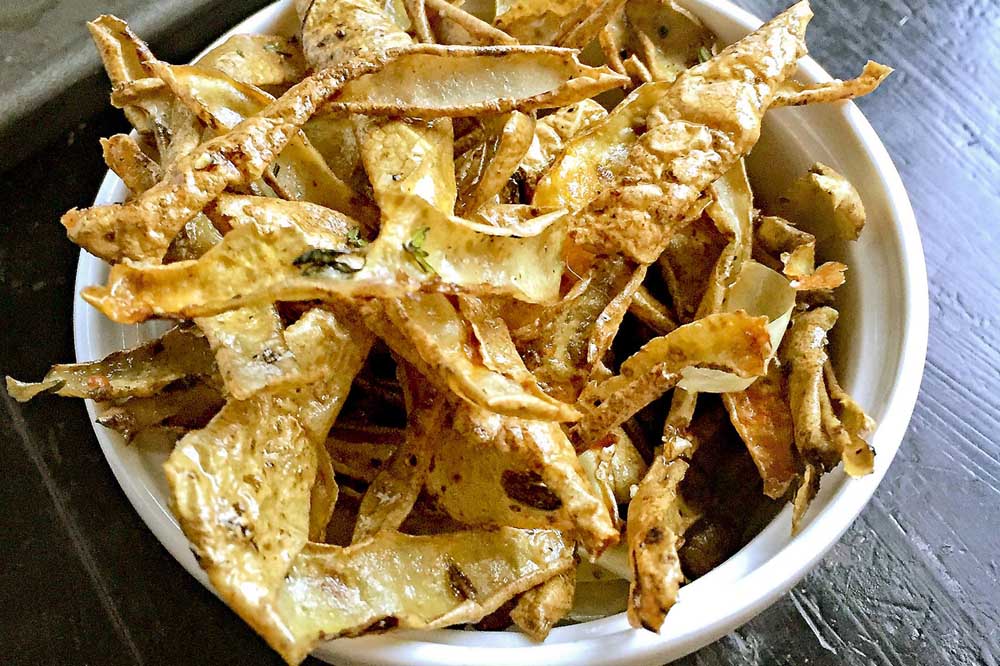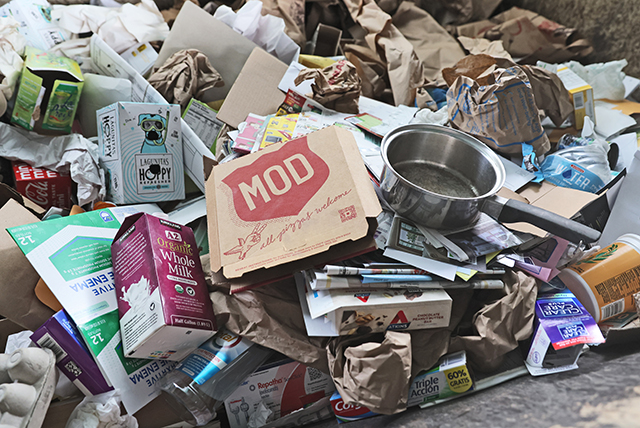Cut down on food waste with these tips
Published 12:02 am Tuesday, April 11, 2017

- Potato Peel "Croutons." (Gretchen McKay/Pittsburgh Post-Gazette/TNS)
The numbers are as shocking as they are appalling.
At a time when 1 in 8 families in America struggles to put dinner on the table, a whopping 40 percent of the food produced in the country never gets eaten.
Trending
Some of it rots in the field before it can get harvested or gets lost or damaged during processing and packaging; other food items get tossed on the way to market because they’re too ugly to be displayed in the grocery store. Thousands of pounds of leftovers end up in the trash because by the time we remember they’re in the fridge, they’re moldy.
Confusion over food labels only adds to the problem.
If you don’t know the difference between “best by,” an advisory that simply means the product will taste best up until that date, but is still edible a few days after, and “sell by,” a date that helps stores keep track of inventory that needs to be bought by a certain time, you are not alone. Labels can be so tricky to negotiate — they vary from state to state or even manufacturer to manufacturer — that 90 percent of Americans throw away food that’s perfectly edible. Twenty percent of the food we buy never gets eaten.
“People assume food labels are federally mandated, but they’re not, other than for baby food,” notes JoAnne Berkenkamp, a senior advocate in the Food & Agriculture Program at the Natural Resources Defense Council, an environmental activist organization. “They also widely assume the dates means the food is no longer safe to eat, and that is almost uniformly untrue. They just indicate when the food is at its freshest.”
All told, we toss more than 23 pounds of food per person per month at home and in restaurants, or 35 pounds per person if you add in food retail. That’s more than 45 bananas or two whole turkeys per capita, and that doesn’t even reflect the additional losses in distribution, food manufacturing and farming, Berkenkamp notes.
America hasn’t always been so wasteful. In the 1970s, we threw away half as much food. But as more people entered the workforce, lifestyles began to change. Americans began eating out more as schedules became busier, and instead of one big meal shared by all, families prepared multiple meals, increasing the amount of food purchased and wasted.
Trending
Portion sizes also have steadily increased over the past decades, and it’s become more socially acceptable to throw out food. “And we love BOGOs and big packages,” says Berkenkamp — even if it’s totally unrealistic that we’ll actually consume it.
As a result, the average family of four throws out $1,500 of food each year, to the combined annual tune of $165 billion.
In home kitchens, fruits and vegetables get wasted the most, 52 percent, because they’re perishable and “are not the most convenient foods to cook,” Berkenkamp says. We also toss half of all seafood, and close to 40 percent of grain products. When it comes to meat and dairy products, we are a little more careful, wasting about 20 percent of each. To put this in perspective, it’s enough food to feed 25 million Americans, according to a 2012 Natural Resources Defense Council issue paper — or the entire population of Texas.
“Consumers aren’t great planners,” says Beth Vallen, an associate professor for marketing and business law at Villanova University. “We over-buy for a lot of reasons, and then are optimistic we’ll eat the foods we buy.”
People don’t realize how much money they’re wasting because food goes in the trash little by little. But when you quantify the number to people, Vallen says, “they’re shocked.”
Many also don’t understand the vast amount of natural resources that are required to produce the food we’re wasting: Getting food on the table eats up 50 percent of all our country’s land, 80 percent of its freshwater, and accounts for 10 percent of the U.S. energy budget.
Diners tend to waste less when they understand the harm it inflicts on the environment; for instance, food scraps rotting in landfills accounts for about 16 percent of all U.S. methane emissions. So education is key in changing consumer behaviors.
If, for example, you don’t care about how your apples look, orchard growers don’t have to throw away as much, Vallen says.
When it comes to commercial food waste, transportation issues, limited storage and insufficient on-site refrigeration can make it difficult for restaurants and grocery stores to donate leftover food to charities. But where there’s a will, there’s a way, and it comes with a blessing from the government. The Bill Emerson Good Samaritan Food Donation Act, enacted by Congress in 1996, protects food donors from civil and criminal liability should a giveaway later cause harm to its recipient.
When it comes to tackling food waste, the spirit on Capitol Hill has been very nonpartisan and enthusiastic, Berkenkamp says. There is legislation in both the House and Senate to develop a better system for food labeling, and members are working on strategies for food recycling. The Food Date Labeling Act of 2016, introduced last May, would establish a uniform national system for date labeling that distinguishes between when a food is unsafe to eat and when it is past peak quality for consumption. It also would ensure that food is allowed to be sold or donated after its quality date.
And in December, the U.S. Department of Agriculture’s Food Safety and Inspection Service revised its guidance on date labeling, encouraging manufacturers to use a “Best if used by” date label instead of “sell by” or “use by” because that phrase is easily understood by consumers as an indicator of quality, rather than safety.
In the meantime, there are simple things people can do to cut down on food waste and in the process, save money. If consumers plan meals better and go to the grocery store with a shopping list, they won’t buy things they won’t use. Learning to store food correctly also can greatly reduce throwaways as can learning how to pickle foods and starting a love affair with your freezer. “It’s so underutilized,” says Berkenkamp. “But it can be our best friend because it preserves food until you’re ready to use it.”
Potato Peel Croutons
Makes 2 cups.
Yes, the skin from peeled potatoes is perfectly edible, and yes, they make a terrific snack when tossed with a little olive oil and roasted in the oven. I used fresh thyme but you could substitute dried. The croutons also are delicious with a sprinkling of cumin or curry powder.
2 C potato peels from well-scrubbed potatoes
6 garlic cloves, unpeeled
2 TBS olive oil
3 tsp of fresh thyme, or to taste
Salt and freshly ground black pepper
1/4 C grated Parmigiano-Reggiano cheese
Preheat oven to 275 degrees.
Toss potato peels and garlic cloves with oil and thyme; add salt and pepper to taste. Arrange in a single layer on a rimmed cookie sheet. Roast until crisp, about 20 minutes, tossing occasionally to ensure even cooking.
Remove from oven and immediately toss with cheese. Use croutons to top salads and casseroles. Can be stored in an airtight container for up to 1 week.
—“Eat it Up! by Sherri Brooks Vinton (Da Capo Press, May 2016)








